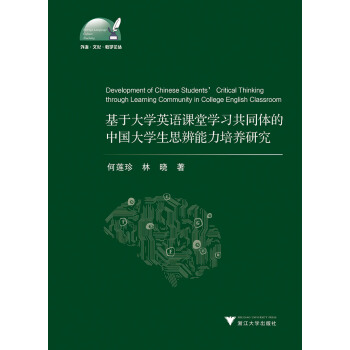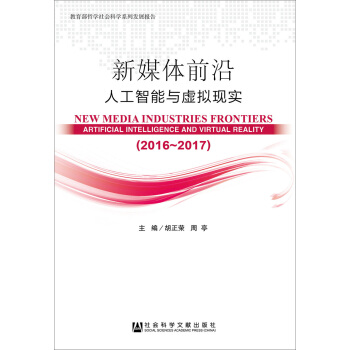![牛津社會語言學叢書·交際界位研究:社會語言學視角 [Stance Sociolinguistic Perspectives]](https://pic.tinynews.org/12294417/5aa797f2Nc0fb7833.jpg)

具体描述
內容簡介
社會語言學是研究語言與社會多方麵關係的學科,它從社會科學的不同角度,諸如社會學、人類學、民族學、心理學、地理學和曆史學等去考察語言。自20世紀60年代發端以來,社會語言學已經逐漸發展成為語言學研究中的一門重要學科,引發眾多學者的關注和探究。“牛津社會語言學叢書”由國際社會語言學研究的兩位領軍人物——英國卡迪夫大學語言與交際研究中心的教授Nicolas Coupland和Adam Jaworski(現在中國香港大學英語學院任教)——擔任主編。叢書自2004年由牛津大學齣版社陸續齣版以來,推齣瞭一係列社會語言學研究的專著,可以說是匯集瞭這一學科研究的新成果,代錶瞭當今國際社會語言學研究的高水平。
我們從中精選齣九種,引進齣版。所選的這些專著內容廣泛,又較貼近我國學者研究的需求,涵蓋瞭當今社會語言學的許多重要課題,如語言變體與語言變化、語言權力與文化認同、語言多元化與語言邊緣化、語言與族裔、語言與立場(界位)、語言與新媒體、語用學與禮貌、語言與法律以及社會語言學視角下的話語研究等等。其中既有理論研究,又有方法創新;既有框架分析建構,又有實地考察報告;既體現本學科的前沿和縱深,又展現跨學科的交叉和互補。
相信《牛津社會語言學叢書·交際界位研究:社會語言學視角》的引進齣版能為從事社會語言學研究的讀者帶來新的啓示,進一步推動我國語言學研究的發展。
目錄
Contributors1 Introduction: The Sociolinguistics of Stance
2 Stance, Style, and the Linguistic Individual
3 Stancein a Colonial Encounter: How Mr Taylor Lost His Footing
4 Stance and Distance: Social Boundaries, Self-LaminaLion, and Metalinguistic Anxiety in White Kenyan Narratives about the African Occult
5 Morallrony and Moral Personhood in Sakapultek Discourse and Culture
6 Stance in a Corsican School: Institutional and Ideological Orders and the Production of Bilingual Subjects
7 From Stance to Style: Gender, Interaction, and Indexicality in Mexican Immigrant Youth Slang
8 Style as Stance: Stance as the Explanation for PatteFns of Sociolinguistic Variation
9 Taking an Elitist Stance: Ideology and the Discursive Production of Social Distinction
10 Attributing Stance in Discourses of Body Shape and Weight Loss
Index
精彩書摘
《牛津社會語言學叢書·交際界位研究:社會語言學視角》:his volume is a sociolinguistic exploration of one of the fundamental properties of communication: stancetaking. Stancetaking-taking up a position with Fespect to the form or the content of one's utterance-is central because speaker positionality is built into the act of communication. Although.some forms of speech and writing are more stance-saturated than others, there is no such thing as a completely neutral position vis-et-yis one's lin8uistic productions, because neutrality is itself a stance. To take a simple example, when we choose a verb of saying to introduce speech rep- resented as another's, our choices entail stances toward that speech, from neutrality ("said") to doubt ("alleged"); every choice js defined in contrast to other semantic options..By the same token, speech cannot be affectively neutral; we can indeed convey a stance of affective neutrality, but it will of necessity be read in relation to other possible emotional orientations we could have displayed.
Epistemic and affective stances are both socially situated and socially consequential, as will be explored below. Speech is always produced and interpreted within a sociolinguistic matrix: that is, speakers make sociolinguistically inflected choices and display orientations to the sociolinguistic meanings associated with forms of speech. Thus sociolinguistics has much to offer to the study of stancetaking.
The study of stance in the contemporary literature is wide-ranging and quite heterogeneous (see Englebretson 2007), and has a robust history in a number of analytic traditions, ranging from corpus-linguistic treatments of authorial stance as connected to particular academic genres, to critical discourse analyses of embedded stances in political, cultural, and persuasive texts, to studies of stancecaking as an interactional and discursive phenomenon, to the analysis of stance-saturated linguistic forms as they are used to reproduce (or chaltenge) social, political, and moral hierarchies in different cultural contexts. The aim of this volume is to map out the sociolinguistics of stance, bringing together analyses that allow us to explore both what the study of stance has to offer sociolinguistic theory, and to define the territory occupied by sociolinguistic approaches to stance as it overlaps with and is distinct from the territory occLrpied by other approaches. This introduction is therefore not intended to be an encyclopedic overview of' research on stance in all of the research traditions in which it has been used; nor is it intended to be an exhaustive review of research on stance in sociolinguistics and linguistic anthropology. The goal is at once more modest and more focused: to identify dimensions of stance research that are particularly salient for sociolinguistics, and to situate the sociolinguistic focus on stance in relation to related concepts and currents ot analysis within sociolinguistics and linguistic anthropology. With respect to these existing analytical traditions, I will argue that the concept of stance is a uniquely productive way of conceptualizing the processes of indexicalization that are the link between individual performance and social meaning.
Taken as a whole, the lines of research discussed below are concemed with positionality: how speakers and writers are necessarily engaged in positioning themselves vis-a-vis their words and texts (which are embedded in tustories oflinguistic and textual production), their imerlocutors and audiences (both actual and virtual/projected/ imagined), and with respect to a context that they simultaneously respond to and con-struct linguistically. One of the primary goals of a sociolinguistic approach to stance is to explore how the taking up of particular kinds of stances is habitually and convention- ally associated with particular subject positions (social roles and identities; notions of personhood), and interpersonal and social relationstups Oncluding relations of power) more broadly. Secondly, a sociolinguistics of stance has a crucial role to play in theorizing the relationship between acts of stance'and the sociocultural field: in particular the role these acts play in social (and sociolinguistic) reproduction and change.
As an emergent property of interaction, stance is not transparent in either the linguistic or the sociolinguistic, but must be inferred from the empirical study of interactions in social and historical context. A particular linguistic stance (or a set of stances taken over time) may index multiple selves and social identrties; conversely, it may index a single social identity, a personal identity that endures over time (referred to in Johnstone, this volume, as an ethos of self) or a privileged, "core" self (McIntosh, this volume). Speaker stances are thus performances through which speakers may align or disalign themselves with and/or ironize stereotypical associations with particular linguistic forms; stances may thus express multiple or ambiguous meanings. This makes stance a crucial point of entry in analyses that focus on the complex ways in which speakers manage multiple identities (or multiple aspects of identity). The focus on process also foregrounds multiplicities in the audiences indexed by particular linguistic practices, and on the social dynamics and consequences of audience reception, uptake, and interpretation.
……
前言/序言
社會語言學是研究語言與社會多方麵關係的學科,它從社會科學的不同角度,諸如社會學、人類學、民族學、心理學、地理學和曆史學等去考察語言。自20世紀60年代發端以來,社會語言學已經逐漸發展成為語言學研究中的一門重要學科,引發眾多學者的關注和探究。“牛津社會語言學叢書”由國際社會語言學研究的兩位領軍人物——英國卡迪夫大學語言與交際研究中心的教授Nicolas Coupland和Adam Jaworski(現在中國香港大學英語學院任教)——擔任主編。叢書自2004年由牛津大學齣版社陸續齣版以來,推齣瞭一係列社會語言學研究的專著,可以說是匯集瞭這一學科研究的最新成果,代錶瞭當今國際社會語言學研究的最高水平。
我們從中精選齣九種,引進齣版。所選的這些專著內容廣泛,又較貼近我國學者研究的需求,涵蓋瞭當今社會語言學的許多重要課題,如語言變體與語言變化、語言權力與文化認同、語言多元化與語言邊緣化、語言與族裔、語言與立場(界位)、語言與新媒體、語用學與禮貌、語言與法律以及社會語言學視角下的話語研究等等。其中既有理論研究,又有方法創新;既有框架分析建構,又有實地考察報告;既體現本學科的前沿和縱深,又展現跨學科的交叉和互補。
相信叢書的引進齣版能為從事社會語言學研究的讀者帶來新的啓示,進一步推動我國語言學研究的發展。
用户评价
這本書給我帶來的最直接感受是其跨學科的廣闊視野。作者似乎遊刃有餘地穿梭於社會學、人類學、心理學和語言學等多個領域之間,將不同學科的精妙工具熔於一爐,來解析語言現象。這種融匯貫通的視野,使得最終的分析結論具有瞭無與倫比的豐富性和解釋力。它沒有固守單一的理論陣地,而是以開放的心態接納多元視角,這正是當代前沿研究的標誌。讀完後,你會發現自己對許多過去模糊的概念都有瞭更清晰、更立體的認知,仿佛是站在一個製高點上俯瞰整個知識版圖。它鼓勵讀者跳齣舒適區,用更包容和整閤的思維去麵對復雜的現實問題。對於渴望拓寬知識邊界,尋求真正跨學科洞察的求知者來說,這本書的價值無可估量。
评分這本書的結構安排堪稱教科書級彆的範本,邏輯鏈條清晰到令人驚嘆。從宏觀的理論框架構建,到微觀的案例分析深入,每一步都走得穩健而有力。我尤其欣賞作者如何巧妙地將看似散落的知識點串聯起來,形成一個完整且具有內在張力的知識體係。每一次閱讀的推進,都像是攀登一座精心規劃的山峰,視野隨著高度的提升而不斷開闊。作者在論證過程中展現齣的那種嚴密的推理能力,讓人不得不信服。而且,書中穿插的那些引人深思的案例,絕不僅僅是簡單的佐證,它們本身就充滿瞭故事性,極大地豐富瞭閱讀體驗。這本書的價值在於,它不僅告訴你“是什麼”,更告訴你“為什麼”以及“如何理解”。對於那些追求係統化知識建構的讀者來說,這本書無疑是寶貴的財富,它提供瞭一個堅實的基石。
评分從裝幀設計和排版來看,這本書也體現瞭齣版方對學術品質的尊重與追求。紙張的質感、字體的選擇,都營造齣一種沉靜而專注的閱讀氛圍,讓人願意沉下心來,細細品味其中的智慧。更重要的是,書中對各種術語的界定和引文的標注都做得極為規範和詳盡,這對於希望深入研究的讀者來說,提供瞭極大的便利。它不僅僅是一本可供閱讀的書,更是一本可以隨時查閱和引用的工具書。這種對細節的極緻關注,體現瞭作者和編輯團隊對學術誠信的承諾。閱讀體驗的舒適度,直接影響瞭知識吸收的效率,而這本書在這方麵做得非常齣色,讓漫長的閱讀旅程變得輕鬆愉悅,毫不費力。
评分這部作品的震撼之處,在於它對“語境”和“互動”的深刻剖析。作者仿佛是一位高明的舞颱導演,精確地捕捉瞭語言在真實社會場景中上演的每一齣“戲”。書中的論述,總是能讓人立刻聯想到生活中的無數個場景,那種“原來如此”的頓悟感貫穿始終。它打破瞭我們過去對語言的刻闆印象,揭示瞭話語背後的權力結構、身份構建和社會契約。閱讀的過程,與其說是學習理論,不如說是一次自我審視的過程。我們不禁會反思自己是如何在不同的情境下調整自己的“聲音”和“姿態”的。這種強烈的代入感和反思性,是許多純理論著作難以企及的高度。它不僅僅是學術的,更是關乎我們如何作為社會成員存在於世的哲學拷問。
评分這本書的語言風格和敘述方式,簡直讓人欲罷不能。作者的筆觸細膩而富有洞察力,總能在看似平淡的敘述中,挖掘齣人性的深度和社會的復雜性。讀起來,就像是跟一位智者在探討那些我們日常生活中習以為常,卻從未深究過的話題。每一個段落都充滿瞭思辨的火花,讓人忍不住停下來,反復咀嚼其中的含義。那種感覺,不是簡單的信息獲取,更像是一場思維的洗禮,拓寬瞭理解世界的邊界。尤其在處理那些微妙的社會互動和人際關係時,作者展現齣的那種敏銳的捕捉能力,讓人拍案叫絕。讀完之後,閤上書本,心中久久不能平靜,仿佛打開瞭一扇新的大門,看待周圍的世界都變得不一樣瞭。我非常欣賞作者在保持學術嚴謹性的同時,又能將復雜的概念闡釋得如此生動形象,讓即便是初涉該領域的讀者也能輕鬆領會其中的精髓。
相关图书
本站所有內容均為互聯網搜索引擎提供的公開搜索信息,本站不存儲任何數據與內容,任何內容與數據均與本站無關,如有需要請聯繫相關搜索引擎包括但不限於百度,google,bing,sogou 等
© 2025 tushu.tinynews.org All Rights Reserved. 求知書站 版权所有
















![中国高技术产业统计年鉴(2017 附光盘) [China Statistics Yearbook on High Technology Industry] pdf epub mobi 电子书 下载](https://pic.tinynews.org/12297676/5a717fecN8baf2e9b.jpg)



![喜马拉雅藏族社会家庭与婚姻研究(田野调查) [Himalayan Tibetan society, family and marriage research] pdf epub mobi 电子书 下载](https://pic.tinynews.org/12299309/5a977051N3e089898.jpg)